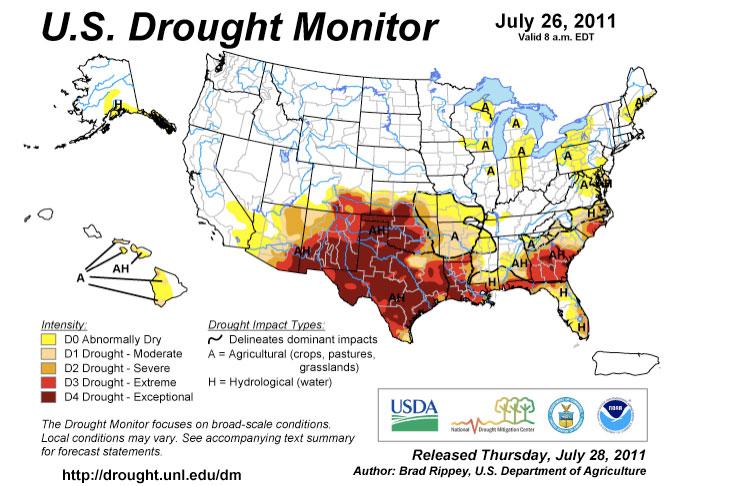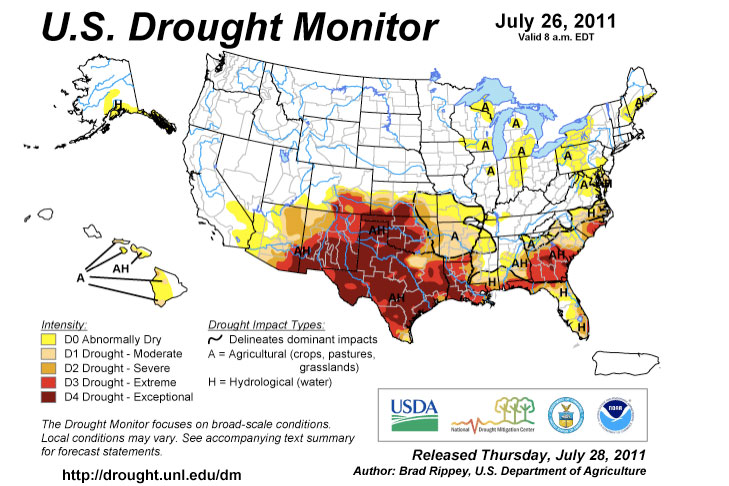New estimates released by the Texas Forest Service (TFS) calculate the number of trees destroyed in the devastating yearlong Texas drought at approximately 100 million to 500 million.
From November 2010 to November 2011, Texas was tormented by the driest conditions the state has ever seen in recorded history. Additionally, the summer months of 2011 brought the hottest weather in Texas history, with high winds also to blame for the extreme drought.
Texans also endured approximately 4 million acres of scorched earth left by severe wildfires early in the year. Around 1.5 million trees were lost in those fires, the number of which is in addition to the trees killed by the drought.
The foresters who serve with the Texas Forest Service had a lengthy task as they set out to collect data from local professionals to determine the drought’s impact on individual communities and regions.
The service’s Forest Inventory and Analysis (FIA) program concluded the final figure based on regional estimates. An estimated 100 million to 500 million trees—or 2–10 percent of the 4.9 billion Texan trees—are believed to have perished due to the drought.
“In 2011, Texas experienced an exceptional drought, prolonged high winds and record-setting temperatures. Together, those conditions took a severe toll on trees across the state,” said Burl Carraway, head of the Sustainable Forestry Department, in a Texas Forest Service press release. “Large numbers of trees in both urban communities and rural forests have died or are struggling to survive. The impacts are numerous and widespread.”
The destruction didn’t discriminate against any species of tree in the drought stricken areas, as trees of different types all across the state were affected. Counties including Sutton, Crocker, Kimble, and Pecos were recorded as receiving the most damage to ash and junipers. Loblolly pines were decimated in Harris, Montgomery, Grimes, Madison, and Leon counties, while Bastrop and Caldwell counties recorded destruction among cedars and post oaks.
Additionally, a large portion of trees may have entered early dormancy to protect themselves from the drought; it is too early to determine which trees will make it through their dormancy. This spring the TFS will use aerial imagery to conduct an in-depth analysis.
“During this time of year, it’s difficult to tell in some cases if a tree is truly dead,” continued Carraway. “And keep in mind that the drought is ongoing. We fully expect mortality percentages to increase if the drought continues.”
An area hit hardest by the drought is known as Piney Woods. Piney Woods is an important economic center for the country as many agricultural workers are employed in the area to produce wood and paper products. No one knows what type of long-term damage the drought has brought to this industry.






